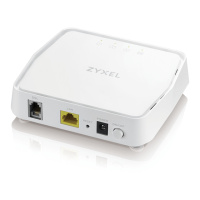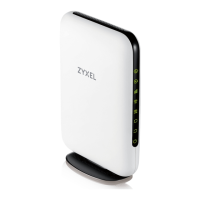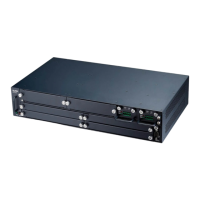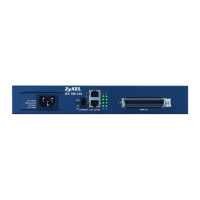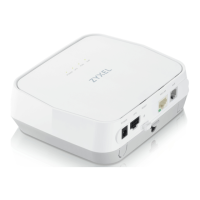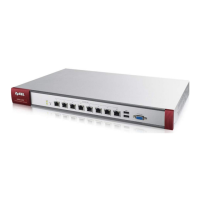Do you have a question about the ZyXEL Communications VMG4005-B60A and is the answer not in the manual?
Explains how warnings and notes are displayed in the guide.
Details conventions used for screen names, labels, and navigation paths.
Lists generic icons used in the user guide and their meanings.
Provides a comparison of VMG models and basic device functionality.
Illustrates typical network environments where the VMG can be used.
Explains how to manage the VMG using the web browser interface.
Offers advice on securing and managing the VMG effectively.
Describes the physical components and connections of the VMG.
Introduces the Web Configurator interface and its requirements.
Details the steps required to log into the VMG's Web Configurator.
Explains the main components of the Web Configurator interface.
Explains the purpose of the Quick Start Wizard for initial setup.
Guides the user through the initial configuration steps of the wizard.
Describes the main status screen showing Management Service, System Info, and Ethernet UNI.
Displays basic system information about the VMG model and firmware.
Explains how to view and determine categories of VMG events and logs.
Outlines the actions possible within the Log section, like viewing system and security logs.
Defines key terms and concepts related to alerts, logs, and syslog.
Describes how to view and filter system logs for events and messages.
Explains how to view and filter security-related logs and events.
Explains how to monitor network traffic and statistics for DSL and LAN interfaces.
Details viewing DSL (WAN) and LAN traffic statistics.
Shows the number of bytes sent and received through the VMG's WAN interface.
Displays the number of bytes sent and received from each LAN port and wireless network.
Explains the Address Resolution Protocol and its role in mapping IP to MAC addresses.
Describes the process by which ARP requests and replies are handled on the network.
Details how to view IPv4-to-MAC and IPv6-to-MAC address mappings for the LAN.
Defines MAC address and explains the table listing client device MAC addresses and VLAN groups.
Describes how to view MAC addresses and VLAN information for associated wired clients.
Explains how to view detailed DSL information, status, port details, and counters.
Describes how to name the VMG (Host) and assign an associated domain name.
Guides on assigning a unique name to the VMG for network recognition.
Explains how to view and modify settings for user accounts that manage the VMG.
Details how to create and manage user accounts and their privileges on the VMG.
Explains how to control services and interfaces used for managing the VMG remotely.
Outlines using MGMT Services and Trust Domain for remote access.
Describes configuring interfaces and ports for VMG remote access.
Explains how to view IP addresses allowed for VMG access via configured remote management services.
Introduces how to configure system time, password, name, and timeout intervals.
Guides on changing the VMG's time and date, setting time zones, and Daylight Savings.
Explains how to configure where VMG sends logs and which logs/alerts are recorded.
Details how to change VMG's log settings, including enabling Syslog Logging.
Explains how to upload new firmware to the VMG for performance enhancement.
Guides on downloading and uploading the latest firmware file to update the VMG.
Introduces backing up, restoring, and resetting device configurations.
Details saving current settings, restoring previous configurations, and resetting to factory defaults.
Explains how to remotely reboot the VMG without turning off the power.
Describes how diagnostic screens help identify problems with the VMG.
Lists diagnostic tools like Ping, TraceRoute, NsLookup, CFM, OAM.
Defines key terms and concepts for understanding diagnostic procedures.
Guides on using network utilities to test host reachability and perform DNS lookups.
Explains configuring and performing Connectivity Fault Management actions.
Describes using link layer Ethernet OAM for link monitoring.
Details performing ATM OAM loopback tests to verify connectivity.
Provides solutions for issues related to device power and LED behavior.
Offers troubleshooting steps for forgotten IP addresses, passwords, and login screen access.
Provides solutions for problems related to accessing the internet via DSL or general connectivity.
Guides on setting the computer's IP address to be in the same subnet as the VMG.
| Device Type | VDSL2 Bridge |
|---|---|
| WAN Ports | 1 x RJ-11 |
| Ethernet Ports | 4 |
| DSL Standard | VDSL2, ADSL2+ |
| Wireless Frequency Band | 2.4 GHz |
| Security | WPA, WPA2 |
| Antennas | 2 x External Antennas |
